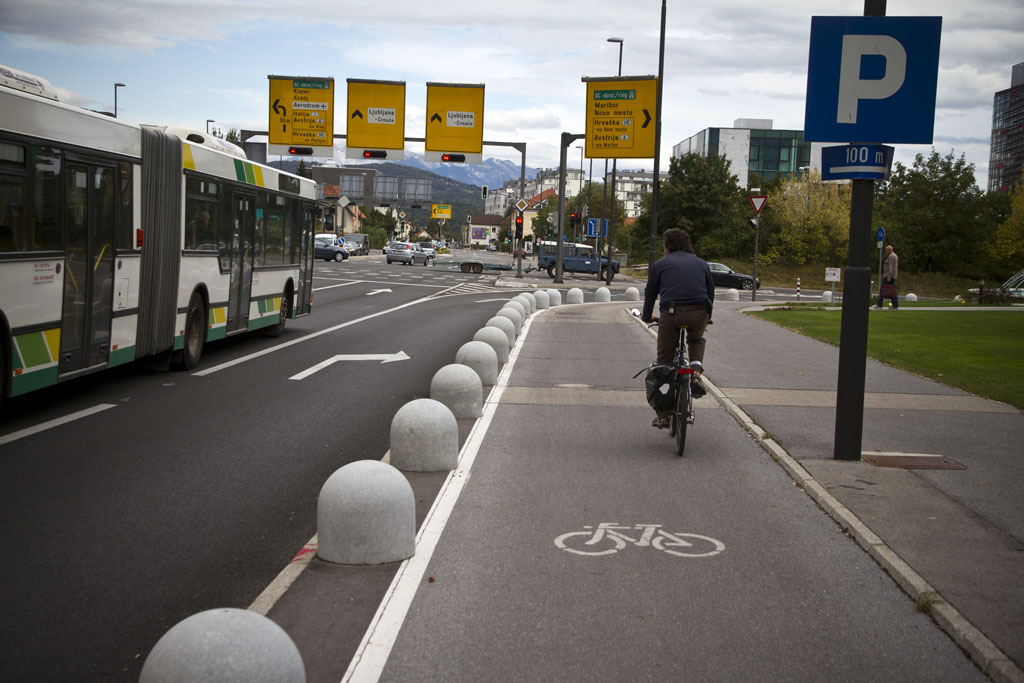However, looking at that green grass boulevard between the traffic lanes, the bicycle lanes, and the sidewalk, they could convert
some of that grass for the bicycle lane. Still have space for snow windrows, but get wider bicycle lanes.
From
link.
What would have been better was to shift the curb closer to the traffic lanes, in exchange put the bicycle lanes (using different material) next to the pedestrian sidewalk.
From
link.
I don't understand why we have an inability to do this simple road adjustment in Canada. It is widespread in Europe.
To be fair, the lower example presents a conflict.
To implement that design (or the same one varied by moving the cycling facility next to the curb) means removing a row of trees.
It would make a the area a good deal less attractive for adjacent owners/renters as well as commuters.
The alternative is narrowing the road to find the room, but if you don't shift the green boulevard (which still means removing the existing trees), the Road narrowing is 2.0M for a one-way bike path/lane on one-side of the street or 4.0M for two-way or two-side.
There is no question that Toronto is ages behind in cycling infrastructure; that it does not follow world-leading practices when it does deliver it, and that road design could and should be better.
However, I think it would be wrong to suggest that most roads lend themselves to an easy design change (where easy means, uncomplicated, low-cost and non-controversial)
There are some roads where i think that would be the case, or mostly so (ie Donlands, or a better Lakeshore Blvd W/Waterfront trail).
After that you tend to get into choices that more pricey or the subject of greater controversy.
We should be willing to take on that challenge.
But so far, not so much.
I will review Transportation's cycling plans and budgets when they come out in the next week or so.
I will also have a chat w/some folks at the City in the next while, and will see if I can gain any insight or info to share.






